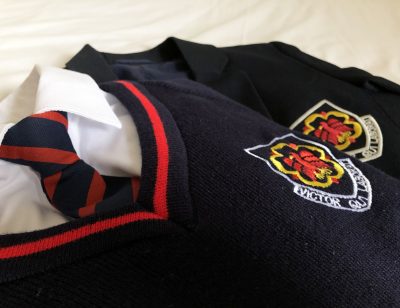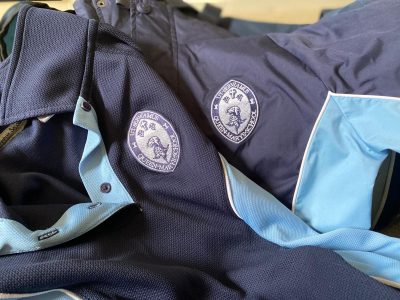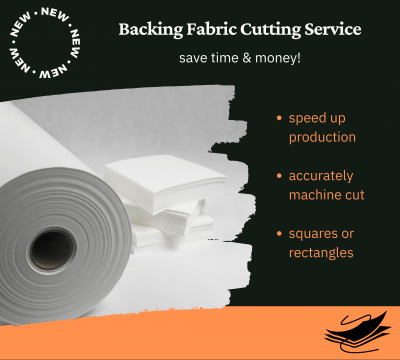 The news that students are expected to return to school in September is no doubt welcome news for school uniform suppliers and embroiderers alike. When dealing with school uniforms, one of the biggest challenges can be that the logo is often required to be reproduced in different sizes across a variety of different garments from polo shirts, trousers and skirts to knitwear and stretchy sports fabrics.
The news that students are expected to return to school in September is no doubt welcome news for school uniform suppliers and embroiderers alike. When dealing with school uniforms, one of the biggest challenges can be that the logo is often required to be reproduced in different sizes across a variety of different garments from polo shirts, trousers and skirts to knitwear and stretchy sports fabrics.
DIGITISING – For the design to successfully translate across a range of garments, digitising plays a key role. Always discuss with your digitiser the type of garment the design will be going onto and the weight of thread you intend to use, they will then be able to make the necessary adjustments for the specific threads and fabrics and their characteristics.
THREAD – When it comes to scaling down a logo consider switching to a finer weight thread, 60 or superfine 75 weight will ensure any fine details remain clear and text as small as 3mm will still be legible. CLASSIC, a natural viscose thread is suitable for most applications unless the garment may be bleached, in which case, use polyester thread from the POLYNEON range.
Both ranges offer a huge colour selection the majority of which are matched to Pantone® colours and both ranges have class 1 OEKO-TEX certification. A recent addition to the specialist thread range is reflective thread, REFLECT-T50 – perfect for adding accents or highlights to clothing and bags to help children be seen in the dark.
 When faced with a diverse range of fabrics, often varying in quality, another vital consideration is selecting the correct backing fabric. But how do you know which backing to use when there are so many to choose from?
When faced with a diverse range of fabrics, often varying in quality, another vital consideration is selecting the correct backing fabric. But how do you know which backing to use when there are so many to choose from?
Cut away or tear away?
Whether you choose a cut away or tear away backing will be determined by the fabric you are going to embroider onto. The stability or stretch of the fabric will determine the amount of stability required and remember, to use a maximum of three layers or switch to a heavier backing.
Most fabrics fall within these main categories;
Knitted fabrics, will stretch in all directions and are particularly unstable. For these fabrics, select a soft cut away backing to help control the stretch and prevent distortion.
Lightweight woven fabrics such as dress shirts and silk, these fabrics are light but are typically not stretchy so will also require a cut away stabiliser. A no-show backing, such as Weblon is a good option here, it’s soft next to the skin and won’t show through fine fabrics.
Tightly woven heavyweight fabrics, such as denim, corduroy and canvas have minimal stretch and won’t need as much stabilisation, a medium 40g tear away backing is a suitable choice here.
Performance wear fabrics – always think ‘light’ and avoid a high stitch count. These fabrics are often extremely thin, stretchy and slippery to hoop. Don’t be put off, these fabrics can successfully be embroidered with Weblon, a backing which has been specifically designed to combat these issues. A single piece will usually be sufficient for a school logo, however, for inferior quality polos try a single piece of Weblon hooped next to the garment with an extra piece of 40g tear away, often a real problem solver.
Don’t be tempted to skimp on backing, a good quality stabiliser can make a huge difference to the outcome of your embroidery.

Madeira offers a wide range of backings in various weights on rolls and pre-cut squares.
To save you time and speed up production we now offer an in-house cutting service for bespoke sizes. Whether you prefer squares or rectangles we can accommodate your requirements.
Free backing samples are available on request, contact sales@madeira.co.uk
© Madeira 2024